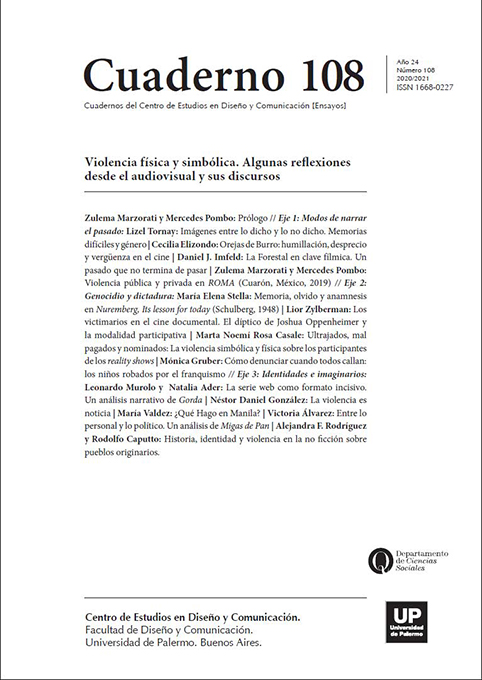¿Qué Hago en Manila?
Abstract
This article analyzes the relationship between the use of the body and its sociocultural performance from the erotic recovery of the police in the film Muerte en Buenos Aires (2014, Natalia Meta). In this film, music operates as a catalyst for the tension that exists between the denied desire and the law, the heteronormic submission and the breakdown of the genre. Thus, violence spills out as a persistent and permanent latency in Argentine society. Methodologically, this work crosses tools of textual microanalysis of films and cultural criticism, and is proposed as a reading about problem states such as cultural symptoms.
References
Althusser, L. (2008). Ideología y Aparatos Ideológicos del Estado. Freud y Lacan. Nueva Visión.
de Balzac, H. (2018). L'Art de Mettre sa Cravate de Toutes les Manières Connues et Usitées. 2e édition (Éd. 1827). Hachette livre-BNF.
Carassai, S. (2015). Los Años Setenta de la Gente Común. La Naturalización de la Violencia. Siglo XXI.
Derrida, J. (2012). Espectros de Marx. El Estado de la Deuda, el Trabajo del Duelo y la Nueva Internacional.
Trotta. Haraway, D. (1988). Situated Knowlodges: The Science Question in Feminism and the Privilege of Partial Perspective, Feminist Studies, 14 (3), 575-579, doi: 10.2307/3178066.
Meccia, E. (2017). El Tiempo no Para. Los Últimos Homosexuales Cuentan su Historia. Santa Fe: Ediciones UNL. Eudeba.
Modarelli, A. y Rapisardi, F. (2001). Fiestas, Baños y Exilios. Los Gays Porteños en la Última Dictadura. Sudamericana.
Perry, G. (2016). La Caída del Hombre. Malpaso.
Los autores/as que publiquen en esta revista ceden los derechos de autor y de publicación a "Cuadernos del Centro de Estudios de Diseño y Comunicación", Aceptando el registro de su trabajo bajo una licencia de atribución de Creative Commons, que permite a terceros utilizar lo publicado siempre que de el crédito pertinente a los autores y a esta revista.


